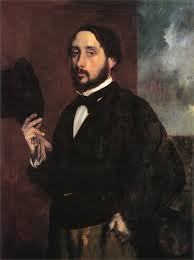Photography, no doubt, began to have a huge impact on paintings in the 19th century. It seemed to circulate in a continuous cycle of artists deriving formal ideas from photographs that were influenced by paintings. The popular opinion at the time radiated disapproval from 19th century artists that thought photography should ‘keep its place’ and argued photography caused a decline in artistic taste by locking artists into producing works of similar style. No matter how hard these artists tried to push the photography away, however, there were still unmistakeable techniques similar to photographic images that were detectable in the works of a wide array of artists including those who so strongly rejected it. Photographs presented a tonal uniformity and descriptive logic that some artists used to capture the unique delicacies that can be found in images. In addition, these images defied the traditional ways of depicting objects in motion and created a new perspective of portraying reality, especially with the discovery of color photography and ‘snapshot’ pictures that could capture the movement of quickly moving objects.
Scharf goes on to explore how Degas was an artist that loved and appreciated the inspiration of photography during the time where artists despised it. He was heavily inspired to create artworks related to that of the ‘snapshot’. Degas used photographs particularly for the composition, poses for his subjects of paintings, and lighting techniques. As can be seen in his self portrait in comparison to a photograph taken of him by a photographer in 1862.


George Federic Watts’ argued the ‘modern error’ of photography and that cameras reproduced deformations in nature by reducing distance, dwarfing objects, and looming repoussoirs in the foreground. He argued that the photogenic perspective was wrong and fueled an experiment to mute this long debate with the answer that it all came down to the angle of vision in the lens of the camera used.
Despite the arguments that rose along the way, Degas continued to use photos as inspiration for his works including those of Japanese artists like Hiroshige. As a result Degas presented new and fascinating techniques in his artworks that no artist had really tried to attempt before such as the cutting off of figures and pictures formed in a cinematic type of progression. A great example of this might also be seen through his work of Dancer Tying her Slipper in comparison to the sequential photos taken of Female, lifting a towel, wiping herself…, which highlights the use of a single subject from a variety of different perspectives.


It was very apparent that Degas was inspired by Muybridge’s photographs as he also became familiar with capturing the true appearance of horses. Although photography was criticized for its lack of style and artists would be vulnerable to the line of fire for using photos, it was clear that photography could help correct the very mistakes that sculptors and painters may have made in their initial representations of subjects such as horses in motion. Overall, Degas created something new in painting by making images pictorially feasible and presenting an enduring quality that would continue to inspire artists and spectators for generations to come.